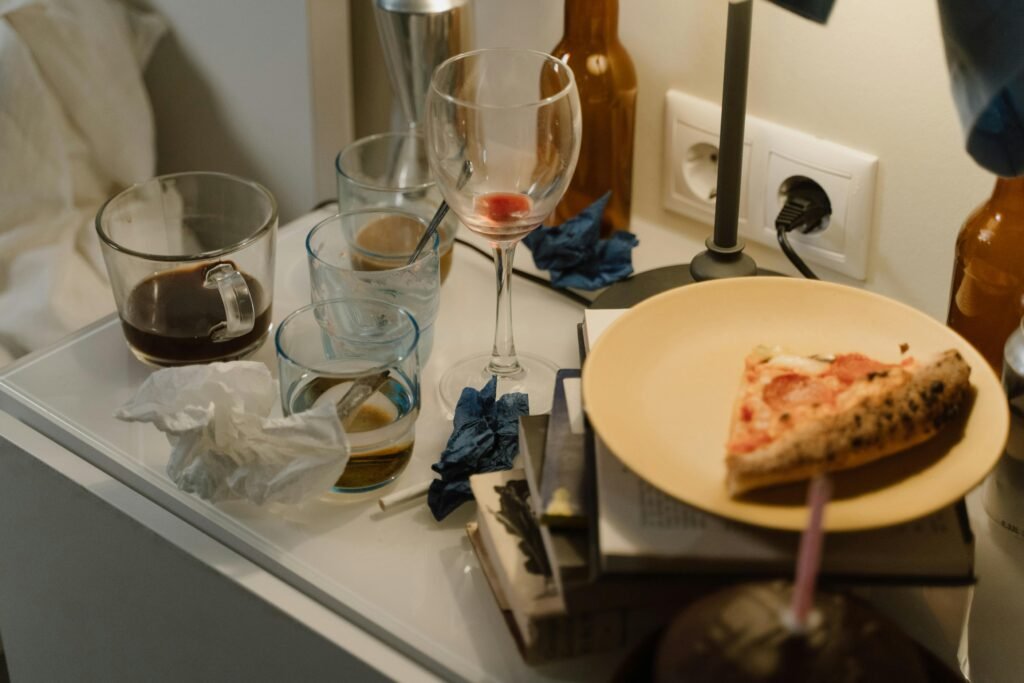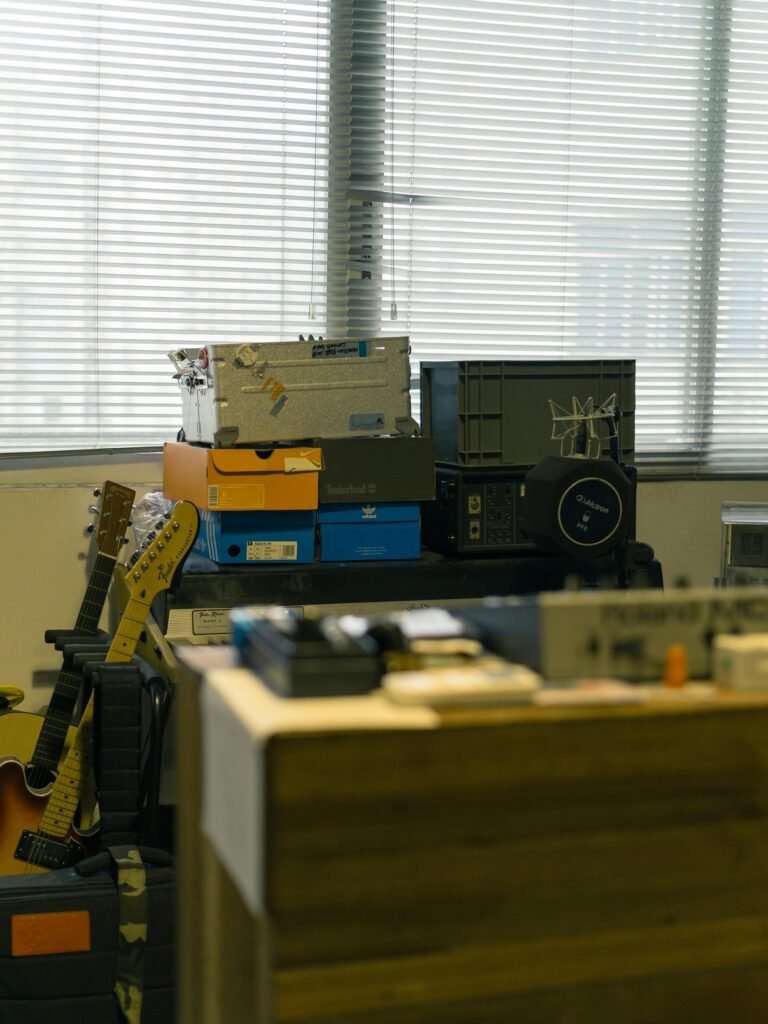💭The Things You Think You Are Not Seeing. But Your Brain Does and it’s Exhausting.
Why clutter that blends in, the kind you think you are not seeing is actually the kind that wears you down most. So, just because You Don’t See it, Your Brain Does.
You walk by it every day.
That stack of mail by the door.
The half-full laundry basket in the hallway.
A weird pile on your dresser — part receipts, part mystery.
You don’t trip over it. You don’t even really look at it anymore.
But your brain does.
Every. Single. Time.
And that’s the thing about visual clutter: it doesn’t have to scream to drain you.
Sometimes, the stuff that’s the quietest is the stuff that wears you down the most.
🧠 Your Brain Sees It — Even If You Aren’t Seeing It.
Here’s what’s wild: your brain is wired to scan for input.
It notices shapes, colors, patterns, changes, misalignments — even when you’re not consciously focused.
That pile of unopened mail you’ve trained yourself to ignore?
Your brain still clocks it.
Every pass, every glance, every time.
It’s logging: “That’s something I haven’t dealt with yet.”
And that message repeats like background noise.
Clutter is a to-do list you didn’t write down — but still carry.
😵💫 “But I’m So Used to It…”
Exactly.
The more you live with visual clutter, the more it blends in.
And the more it blends in, the less urgency you feel to deal with it.
But here’s the trick: just because you’re used to it doesn’t mean it’s not affecting you.
That corner you don’t clean anymore?
The low-key shame, parked next to your nightstand.

Then there’s the tangled bin of cords you’ll “sort later”?
These are unmade decisions — and a constant whisper that you’re behind.
🔄 The Subtle Exhaustion of Visual Clutter
This kind of clutter doesn’t yell. It sighs.
And you don’t always feel it all at once — but it stacks up.
You:
- Start avoiding certain rooms.
- Snap quicker at your kids or partner.
- Feel like you’re behind before the day even starts.
Remember, you’re not “bad at adulting.”
You’re just being visually overstimulated and emotionally under-supported.
That’s not failure. That’s survival mode.
🧼 “Clean” Doesn’t Mean “Clear”.

Let’s pause here, because this one’s tricky.
Your house can be clean — dishes done, floors mopped, things generally “in order” —
and still feel like it’s too much.
Why?
Because clean isn’t the same as clear.
“Clean” is surface. “Clear” is support.
A tidy-looking room with overwhelming energy still drains you.
This is especially true for neurodivergent brains, anxious brains, sensory-sensitive brains, or anyone just operating on low bandwidth.
📍How to Spot the Clutter If You Are Not Seeing It.
Here’s a quick mental exercise.
Pick a room — any room.
Now, imagine you’re walking into it for the first time as a guest.
- Right away, what stands out?
- Visualize what would your eyes land on?
- What looks “unfinished,” out of place, or like it needs a decision?
You might be shocked at what suddenly pops out.
We don’t just get used to clutter — we get blind to it.
🧩 Decluttering What You Are Not Seeing Anymore
So what do you do about the mess your brain has stopped registering?
And you use a method I call “The Pause + Pinpoint.”
- Pause:
Stand in the room. Breathe. Soften your gaze.
What do you feel? Tension? Tightness? Frustration? - Pinpoint:
Now, scan the room. What spot bugs you just a little bit every time you see it?
That’s your starting point.
Start there, not with the biggest pile or the deepest closet.
The goal here isn’t a dramatic makeover — it’s creating micro-moments of relief.
🛋 Examples of “Invisible Clutter” to Hunt For:
- A “stuff chair” in the bedroom
- Unopened Amazon box from 3 weeks ago
- The pile of random chargers you haven’t matched in years
- Coat racks with more hats than people in the house
- Expired coupons, manuals, half-burned candles, stretched-out hair ties
None of it looks dramatic. But it feels like noise.
Your brain craves clarity — and clutter blocks it.
🧠 You’re Not Lazy — You’re Overloaded, So You Are Not Seeing It.
If you’re feeling guilty about not “dealing with it sooner,” stop right there.
This isn’t about laziness or being messy or bad at adulting.
It is about decision fatigue, emotional attachment, survival mode, and having a life.
Let’s be honest:
You weren’t ignoring the clutter because you didn’t care.
But you were ignoring it because you were busy surviving something else.
Get to forgive that version of you — and create new moments of clarity now.
🚪A New Rule: If You Aren’t Seeing It, Name It!
From here on out, when you walk into a room, challenge yourself to name one thing you’ve stopped seeing — and make one decision about it.
Toss it, donate it, put it away, or finally admit it doesn’t belong.
That’s it. No pressure to fix the whole room.
One decision = one win.
And wins compound fast.
🔁 Final Thought: Your Space Reflects Your Energy
Clutter you don’t see anymore?
It still affects how safe, calm, and supported you feel.
But here’s the good news:
You can start to feel lighter, clearer, and more in control — without cleaning everything.
Just pick one spot.
Look at it with fresh eyes.
And ask:
“What’s still here that I no longer need to carry?”
Then let it go — and breathe a little deeper.
💬 Sticky Note Edition:
- If you walk past it and sigh a little — that’s clutter.
- Clean doesn’t equal calm.
- One overlooked pile can drain a whole day.
- You deserve a space that supports your brain.
- When you don’t use it, need it, or love it — it’s just noise.
Let’s put that away — with love, not pressure. ✨



